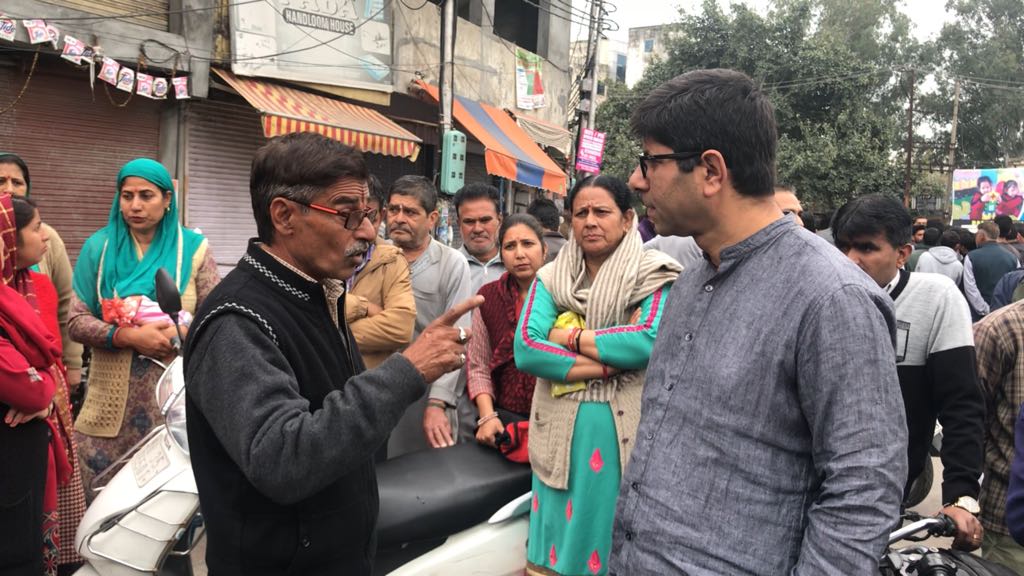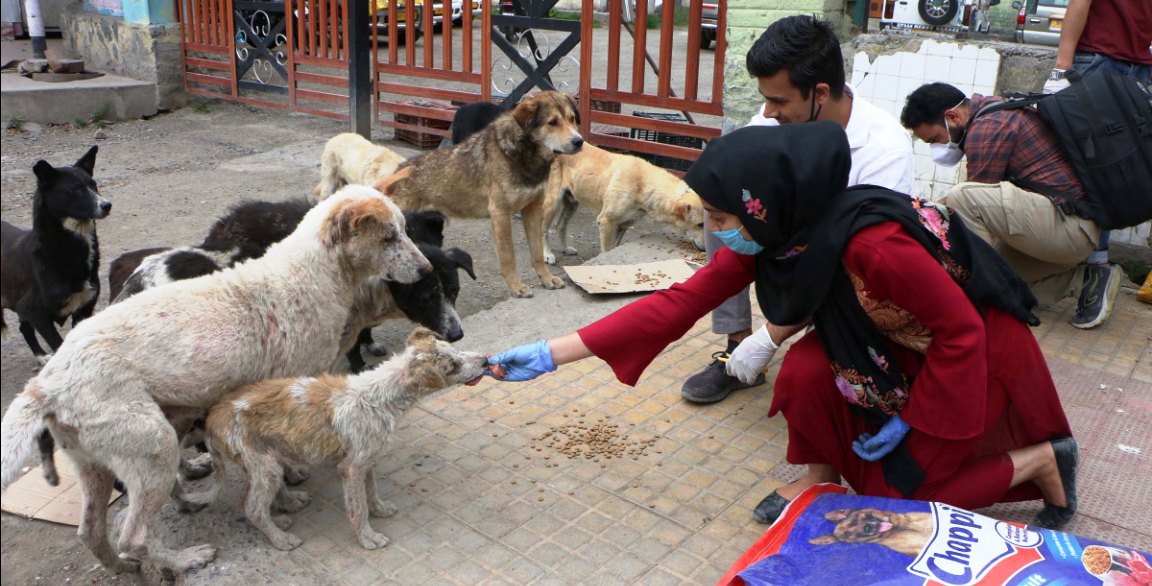SRINAGAR: In the gut-wrenching details of the horrific kidnapping, gang-rape and brutal murder of the little Asifa, the entire story is a cane-full of venomous villains.
Sanji Ram is central to the story: from hatching the conspiracy to executing it, there is no element of the story that leaves him aside. He is the person who uses his own son and nephew in implementing the script he created much earlier thus “up-rating” his character beyond any surviving villain in this part of the world.

But in revealing the real story, exposing the conspiracy and offering graphic details of what had actually happened to the poor nomad girl, is a different set of people: the heroes, who are still unseen as part of the after-story. They actually are the characters of the new story, the story of justice for Asifa. It is their effort that led to a chain of events from arresting the accused, forcing their sympathisers in politics and bar to the back foot. Two ministers have already resigned and some more tensions are brewing in the entire socio-political landscape.
But who they are? And why they did it? What was their motive? And, more importantly, if there were any costs? Some did it in individual capacities and some as part of the institutional interventions and responsibility. But they all fit in the role of hero’s because the rapists and killers are established villains.
Talib Hussain: The Activist
The family’s mourning apart; it was the young lawyer Talib Hussain who played a key role at a time when efforts were underway to bury the case. As the little girl was kidnapped, he protested. This landed him in Hiranagar police station where he was detained. Police even threatened him with a Public Safety Act if he would not stop his activism.
To the misfortune of the killers, and the police, the assembly was in session and the issue was raised by the opposition. A day after Asifa’s mention in the assembly, the body of the girl was recovered and Talib was set free by the police.

But Talib did not stop. He used every single day to ensure the Asifa case is not consigned to records. He gave the confidence to the terrified family and the cluster of Bakerwals in Rasana belt to stand up and speak. He was the main force behind the family’s application before the High Court that led to the monitoring of entire investigation by the court. As leader of Gujjar Bakerwal Students Welfare Association, he moved various campuses from Hyderabad to AMU with the Asifa case and asked the Muslim students answers to the most uncomfortable questions about survival in Sangh-dominated areas within and outside Jammu and Kashmir.
Talib, not many people know, is himself a Bakerwal. Born to nomad parents who were washed away around Dooru in Islamabad during the September 2014 floods, Talib has three brothers and four sisters. Already a graduate from Moulana Azad Memorial College in Jammu, it was a year after he lost his parents that Talib graduated in Law from Jammu University in 2015.
Very sensitive towards the crisis the Bakerwals and the Gujjars are facing across the J&K, he left the Bar in Jammu in 2017 and took the activism as a full-time job. The major factor in his career was the crisis that his community has been facing in the forests of Jammu where their temporary dhokas were set afire as part of the government policy in last three years. The entire process was presided over by the Forests Minister, Lal Singh, who resigned in wake of Asifa case. But in Asifa case, he was involved fully.
Even after the Crime Branch submitted the charge-sheet, the major worry with Talib was to trace the family of Asifa that had migrated earlier. He followed their migratory route and traced them somewhere near Udhampur. There, a TV network had planned a debate on whether the rapists should be hanged or not. “As I started speaking, a number of people of whom I have identified three shouted and prevented me to speak,” Talib said from Jammu. “I moved out of the open debate in Dabhar Park along with the family of Asifa and they dragged and beat me.” He said he has given a complaint to the police and does not the follow-up. Right now, he said, he is managing his injuries in Jammu.
The Crime Branch
This specialised section of the police, the Crime Branch did not get into the Rasana rape suo moto. It was assigned to the Branch after clear signals were detected about police’s collusion with the criminals at ground zero. Initially, the shifting of the case was fiercely reacted to the extent that fingers were pointed towards the capacity of the “Muslim Kashmir Police”.

When the charge sheet was filed, the entire process was attributed to three officers Affadul Mujtaba, who heads the Crime Branch, SSP R K Jalla, who supervised the investigations, and Naveed Peerzada, an SP rank officer, who was the principal investigator. That is not the full story.
“If you say that the investigation was carried out by three of us then it is grossly incorrect,” one senior officer said. “It was a huge team involving men and women who worked tirelessly for all these days.”
Though it is being insisted by sections within Jammu that the “people were flown from Srinagar”, it is incorrect. The real investigators came from Jammu. DySP Nisar Ahmad Shah, for instance, is a post graduate in English and has done a special course in criminology and he is from Rajouri. Ms Shwetambri Gupta who hails from an influential Jammu dynasty was another DySP who investigated the case. There was many inspectors and assistant sub-inspector who contributed immensely to the investigations: Inspectors Kewal, Urfan Ahmad Wani, and ASIs Tariq Ahmad and Nissar Ahmad. They all are from Jammu.

“The entire team worked as a unit and usually between 10:30 am to 11:30 in the night and there were no holidays,” another officer said. “Nobody was even permitted to go on leave for all these months because the nature of the case demanded so.”
The investigators visited the village almost seven times. “It was not that we went to the village and got the accused,” one officer said. “We had to investigate and ensure we have enough of evidence to do so, sometimes we were so frustrated that we would differ and then fight with each other, then talk and walk the talk further.”
The officer said there were countless instances in which the investigators had no time to take meals or even take their kids to the doctor. “But every single instance was corroborated by actual and scientific pieces of evidence,” he said.
Asked if they resorted to torture as has remained part of the routine police working, an officer said there was no requirement. “In criminal cases, when the chain is established, things come so automatically that you need to put in efforts and collect the pieces of evidence,” the officer said. “Since the investigation was being monitored by the High Court, the accused were supposed to be presented before the court every four days after the mandatory medical examination. Had there been such cases, the bench or the doctors would have noticed it.”
In the entire course of the investigation, the team examined 220 people and 130 of thm would be the prosecution witnesses in the case.
Officer said they had a task and they delivered, even going against the black sheep, who are otherwise their colleagues. “It was just a serious crime and investigators rarely see it from any other angle,” one officer said. “It was just a task.”
The Kashmir Media
Sanji Ram chose a very wrong time for his devious conspiracy. The assembly was in session and entire Kashmir press corps was in Jammu. When the incident of kidnapping reached assembly along with Talib’s detention, it was an indicator of a major story unfolding in the forests of Jammu. The Gujjars and Bakerwals were facing the music in the forests of entire Kathua-Samba belt for all these years as Jammu was over busy in the anti-encroachment drive in its periphery. An abduction taking place in this backdrop was not a normal thing. When finally the body was recovered, it was very clear what was happening on the ground.

This marked the beginning Kashmir media’s uninterrupted travels deep into the forests. They faced lot of crisis in reaching the place but it was nothing abnormal because turmoil has helped Kashmir media to understand how to manage to reach the spot and how not to sleep on a story. All major Srinagar newspapers reached the spot so did lot many reporters representing various non-J&K publications.
TV crews from NDTV, News18 and all other channels would ensure that they do not miss a development. After the case was handed over to the Crime Branch of the state police, the profile of the story upgraded automatically. This was becoming more important because the local Jammu media would not touch this incident barring the kidnapping and the recovery of the dead body. It avoided following it up and skipped all the events that were taking place.
Hours after submitting his resignation when Lal Singh “credited” NDTV’s Nazir Masoodi and Zaffar Iqbal for his fall, he was actually telling a fact. It was a Kashmir story from Day One and still continues to be.
“I visited Rasana six times on Asifa story and countless times for other stories in the same area,” Masoodi told Kashmir Life. “The shades of the crisis were visible even on day one.”
But what motivated him to go for a series of follow-ups that did not miss even a single development in the case?
“The day I went there, I saw a complete sense of dispossession in a family of nomads who were not only physically isolated but ostracised psychologically and socially,” Masoodi said. “I am still haunted by the scene when the parents of Asifa wanted to cry but were unable. And then one of their relatives decided to talk.”
Asifa was an adopted daughter of the family. They had lost three of their daughters in a road accident and then Asifa was adopted. Asifa was their relative’s daughter.

“Tragedy was that they had clicked the photograph of Asifa the same day she disappeared and it was haunting them and now it is haunting me,” Masoodi said. “The name of Sanji Patwari appeared on the very first day when two relatives of Asifa decided to talk, almost risking their lives.” He said he remembers Naseema saying: “If we cannot talk now, we will never be able to talk. Let them kill us all, then what.”
As the story unfolded, Masoodi said, he did not spear even a single person with whom he did not interact. “I would sit with accused and talk about the case and it included Sanji Patwari who once told me that he also wants justice for Asifa but the Crime Branch is after me because they want to convert my home into a Masjid,” Nazir said. “The use of ideology in converting the case into a communal thing was the real disturbing development that would convince me to not stop following it up.”
He remembers Talib, the activist, going uphill barefoot for the forest rights of his community. “It gave me an idea that I decided must be taken to state’s Forest Minister Lal Singh,” Masoodi said. “When I asked him, he said J&K has Article 370 and it would not be implemented and then it was clear to me that people who stand for integration of the state in India use the special provision to further their ideological baggage.”
Masoodi recordings were crucial to the dismissal of Shanti Swaroop from the basic membership of National Conference and a huge embarrassment to the Congress as G M Mir, the state president, was also supportive of the Hindu Ekta Manch, a literal Special Purpose Vehicle (SPV) that Sangh floated for saving the accused. It was his video of the two ministers speaking to the Manch warning police not to arrest any accused and inciting people to launch an agitation in support of rape accused that eventually nailed them and became their nemesis.
No place is good or bad. And every place has good and bad people. The only difference is unless the bad do not show up, good are barely seen. Long live the good men and the women.















